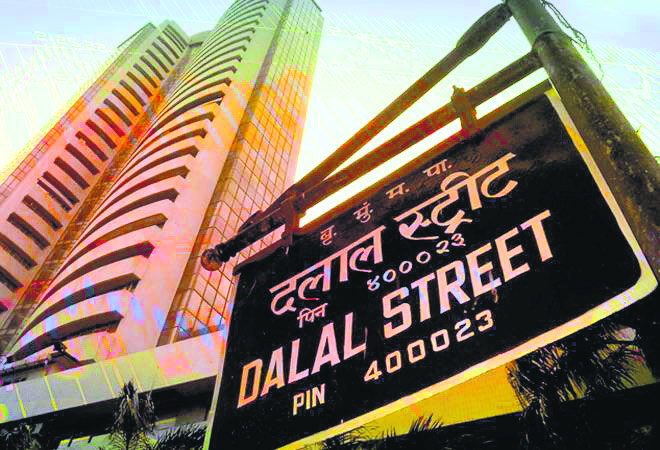Indian stock indices took a rollercoaster ride and settled marginally in the red the day the central government presented its interim Budget for 2024-25.
Analysts said dampening performance in the indices could be due to below-expected capital expenditure markup in the Budget document and the US Fed’s unclear guidance on loosening the monetary policy stance.
Some, however, attributed it to mild profit booking.
Sensex settled at 71,645.30 points, down 106.81 points or 0.15 per cent, and Nifty at 21,697.45 points, down 28.25 points or 0.13 per cent. Among the widely-tracked Nifty sectoral indices, Nifty media, Nifty metal, and Nifty realty declined the most. Nifty PSU bank on the other hand rose as high as over 3 per cent.
The broader market indices – Sensex and Nifty — were in the green at the opening bell, but as the day progressed and with the tabling of the Budget it edged towards the red.
“Surprisingly on the day of Interim Budget 2024, the benchmark indices saw range-bound activity, with Nifty closing 36 points lower while Sensex was down 107 points. Among sectors, the PSU Bank index was the biggest gainer, rising over 3 per cent, while profit-booking was seen in digital and metal stocks, resulting in a decline of over 1 per cent in both indices,” said
Shrikant S.
Chouhan, Head – Equity Research, Kotak Securities Limited.
According to Ajit Mishra, SVP – Technical Research, Religare Broking Ltd, “Markets oscillated in a narrow range on the budget day and settled marginally lower. The tone was positive at the beginning however profit-taking emerged around the previous swing high.”
“Markets are not in a hurry for the next directional move and the recent price action reaffirms our view. Traders have no option but to align their positions accordingly and focus more on a stock-specific trading approach. Though we are seeing consistent outperformance from the broader indices despite the overbought condition, we feel it is prudent to restrict exposure and prefer only quality names,” Mishra said.
“The domestic market was marginally disappointed by lower than expected infra spending in the interim budget. However, the government’s commitment to fiscal prudence, targeting a fiscal deficit of 5.1 per cent for FY25BE, is expected to improve the outlook on economic ratings,” said Vinod Nair, Head of Research at Geojit Financial Services.
“Meanwhile, the US FED’s decision to maintain rates without clear guidance on future cuts dampened market sentiments,” said Nair.
The government proposes to increase capital expenditure outlay by 11.1 per cent to Rs 11.11 lakh crore in 2024-25, amounting to 3.4 per cent of the GDP, Union Finance Minister Nirmala Sitharaman said on Thursday in her interim Budget, ahead of the General elections. A capital expenditure, or capex, is used to set up long-term physical or fixed assets.
Coming to the fiscal deficit, the government pegged for 2024-25 at 5.1 per cent of gross domestic product (GDP). In 2023-24, the government pegged the fiscal deficit target for 2023-24 at 5.9 per cent of gross domestic product (GDP). Today, Sitharaman said that the fiscal deficit of 2023-24 was downwardly revised
to 5.8 per cent.
The government intends to bring the fiscal deficit below 4.5 per cent of GDP by the financial year 2025-26.
Further, as expected and in relief for the citizens, the central government neither tweaked nor put any additional tax burden on citizens.
The interim budget, tabled today, will take care of the financial needs of the intervening period until a government is formed after the Lok Sabha polls after which a full budget will be presented by the new
government in July.



















